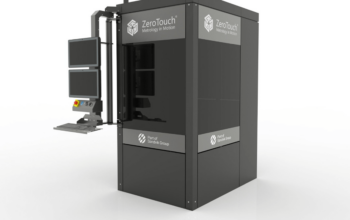On 21 October 1923 the first public demonstration worldwide and as such the birth of the modern planetarium took place at the Deutsches Museum in Munich. It was later called Modell I.
On 7 May 1925, the ZEISS Planetarium in the Deutsches Museum began regular operation.
The International Planetarium Society (IPS) and the Society of German-speaking Planetariums e. V. (GDP) will celebrate the anniversary together with planetariums around the world between 21 October 2023 and 7 May 2025. The official opening ceremony will take place at the Deutsches Museum in Munich and the Zeiss-Planetarium Jena in cooperation with ZEISS on 21 October 2023. The opening event, featuring contributions from astrophysicist and aspiring astronaut Dr. Suzanna Randall and former ESA astronaut Thomas Reiter, can be experienced from 5 p.m. at https://planetarium100.org/centennial-projects/launch-event/livestream/live.
Federal President, Frank-Walter Steinmeier, is the patron of the Centennial and its numerous events and activities over the next two years. The planetarium show “Kira” funded by the Carl Zeiss Foundation and produced by Softmachine Immersive Productions GmbH in commission of GDP, and the show “100 Years Eternity” by Tobias Wiethof supported by the Bochum Planetarium, will make their world premieres at the opening event.
Journeys into space
Today there are more than 4,000 planetarium installations in almost every country in the world, 700 of which have been equipped with ZEISS technology. The name ZEISS and planetariums are closely linked. Today, as modern high-tech domes, star theaters offer fascinating fulldome shows and are still a crowd puller after 100 years. It is estimated that more than one billion people have visited a planetarium – another reason why the centennial is very special to the company.
“Today planetariums offer so much more than just a view of the stars,” says Dr. Karl Lamprecht, President and CEO of ZEISS. “They are places where, thanks in part to our innovative planetarium technology, space can be experienced. Children and adults can travel virtually through the entire universe. Planetariums thus broaden horizons and arouse enthusiasm for science and technology. In doing so, they combine science, art, culture and education in a unique way.”
ZEISS provides the combination of the traditional optical-mechanical star projector and digital video projectors which distinguish the most modern planetariums in the world.
Idea of rotating star sphere
In 1913, Oskar von Miller, founder of the Deutsches Museum in Munich, had the idea for an apparatus that would make the movements of the sun, moon and planets visible at the same time as those of the stars and asked ZEISS about manufacturing a ‘rotating star sphere’.
It is generally known that there was a meeting between representatives of the company and the Deutsches Museum in Jena on 24 February 1914. They discussed the complicated mechanics and Dr. Walther Bauersfeld of ZEISS came up with the idea of projecting the sun, moon and planets. His colleague, Professor Rudolf Straubel, remarked that the stars should then also be projected.
After World War I interrupted this development, Bauersfeld presented a design for a planetarium based on optical-mechanical light projection in March 1919. He and his team then began work on fleshing out the details. The time had come, and the artificial sky was illuminated for the first time on 21 October 1923. Expectations were far exceeded at the time, he says, so that after completion the device was installed permanently in 1925 and opened to the public as the world’s first planetarium on 7 May 1925, with the opening of the new part of the Deutsches Museum in Munich. The first projector from ZEISS brought 4,500 stars to shine in the dome.
In the one hundred years since 1923, ZEISS has developed and supplied numerous planetarium models and digital projection solutions for star theaters around the world.
An anniversary packed with activities
To mark the anniversary of Centennial of the Planetarium, the Deutsches Museum in Munich is showcasing the fascinating history of planetariums in a special exhibition of the same name sponsored by ZEISS. The exhibition includes several historic projectors, including Model I, which ZEISS presented to the Deutsches Museum is running between 5 May 2023 and 28 January 2024. Current planetarium shows can also be viewed in the portable dome.
In addition to the special exhibition, ZEISS is also involved in organizing the opening event, with a ZEISS Colloquium in November 2023. All ZEISS events relating to the anniversary can be found here www.zeiss.com/planetariums100.
You can find more information on the anniversary on the official anniversary website here https://planetarium100.org.
Click on the following link Metrologically Speaking to read more such news about the Metrology Industry.









